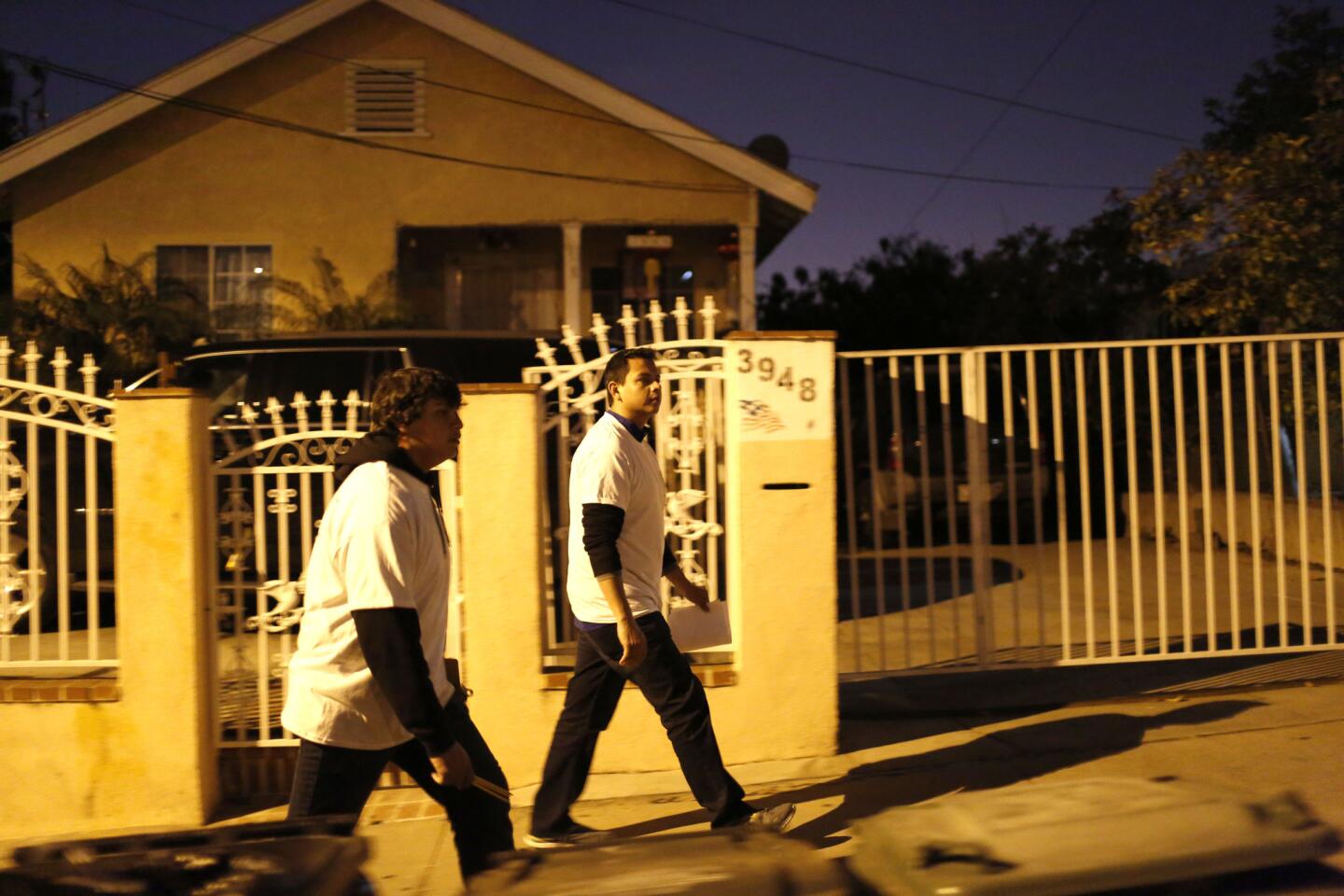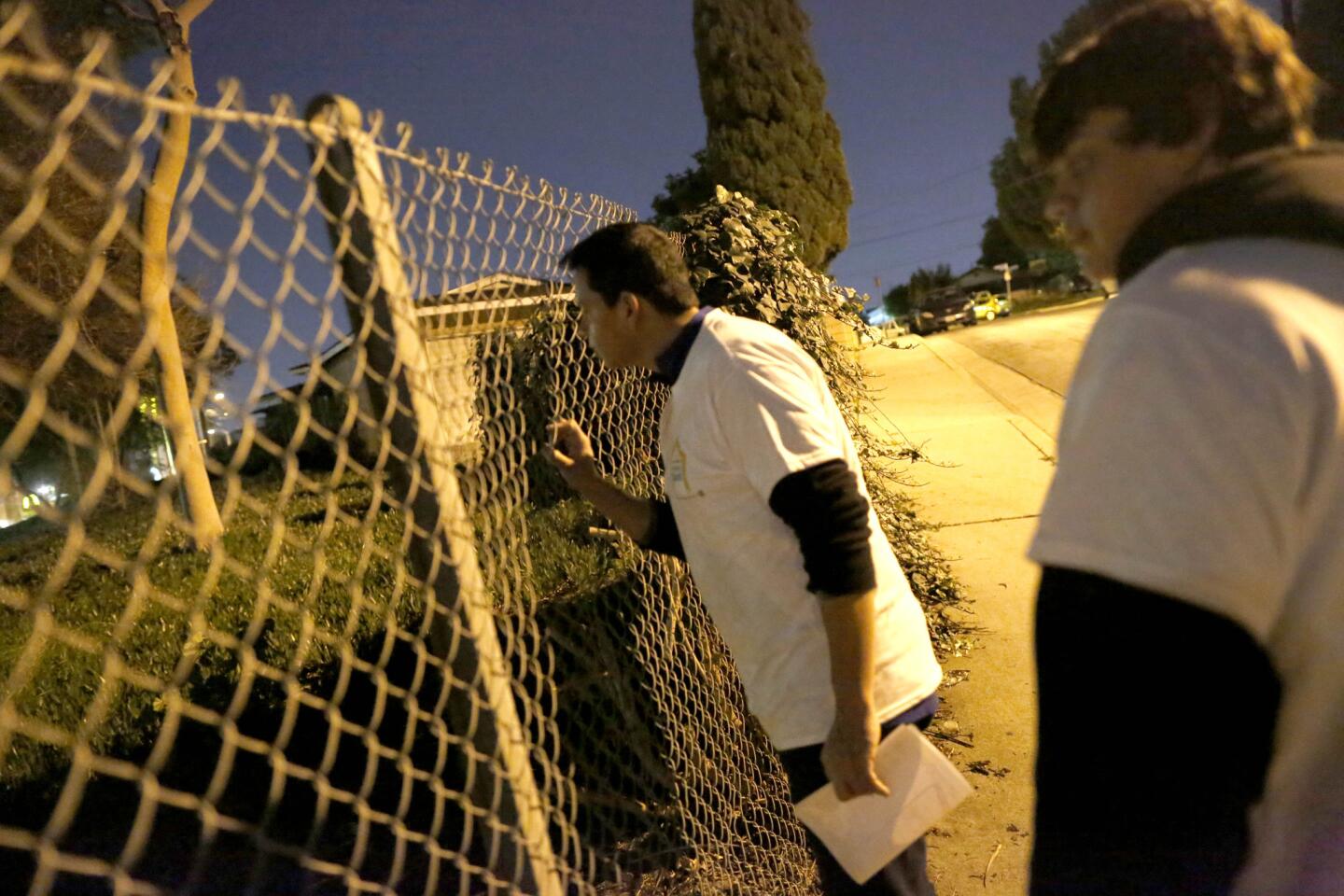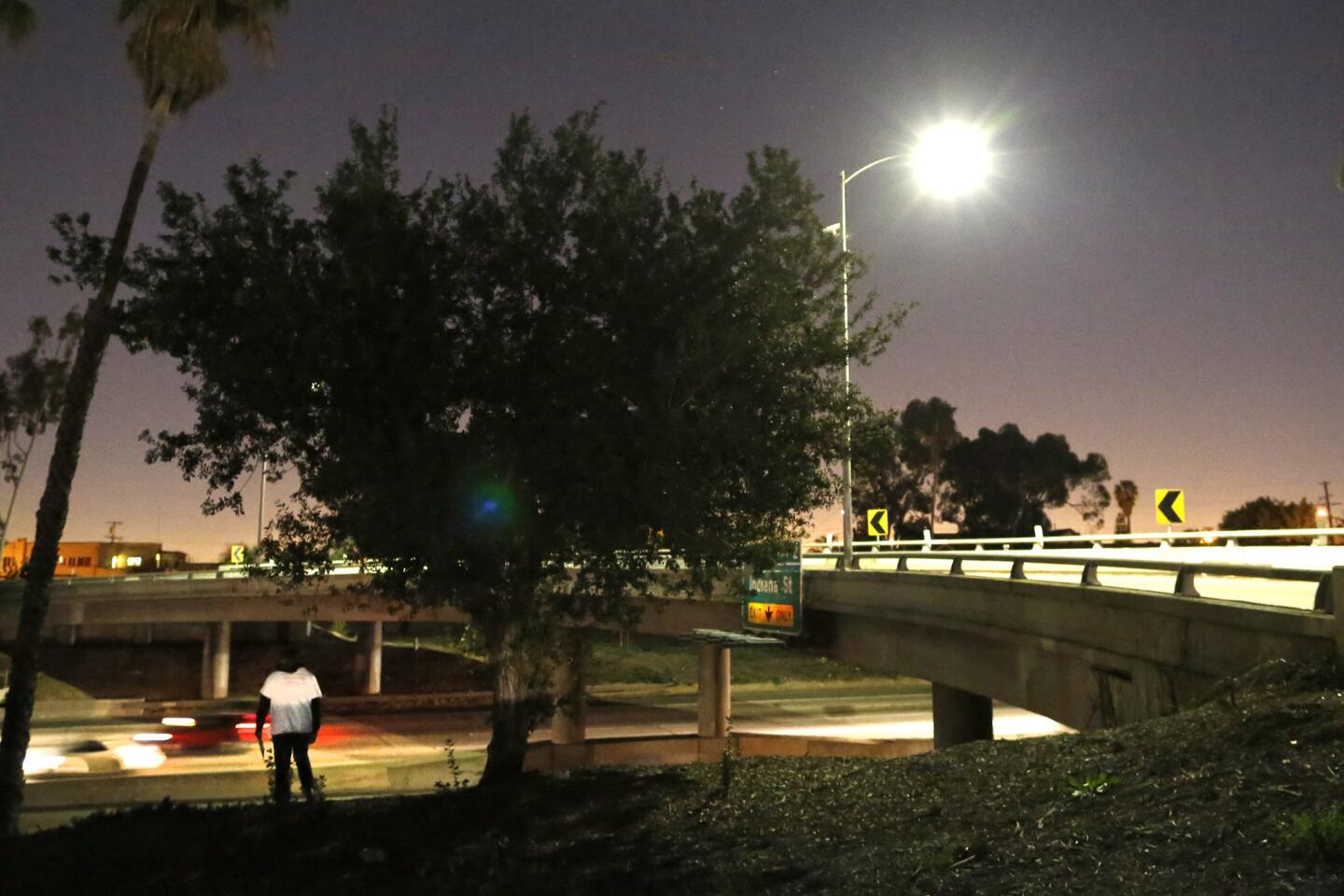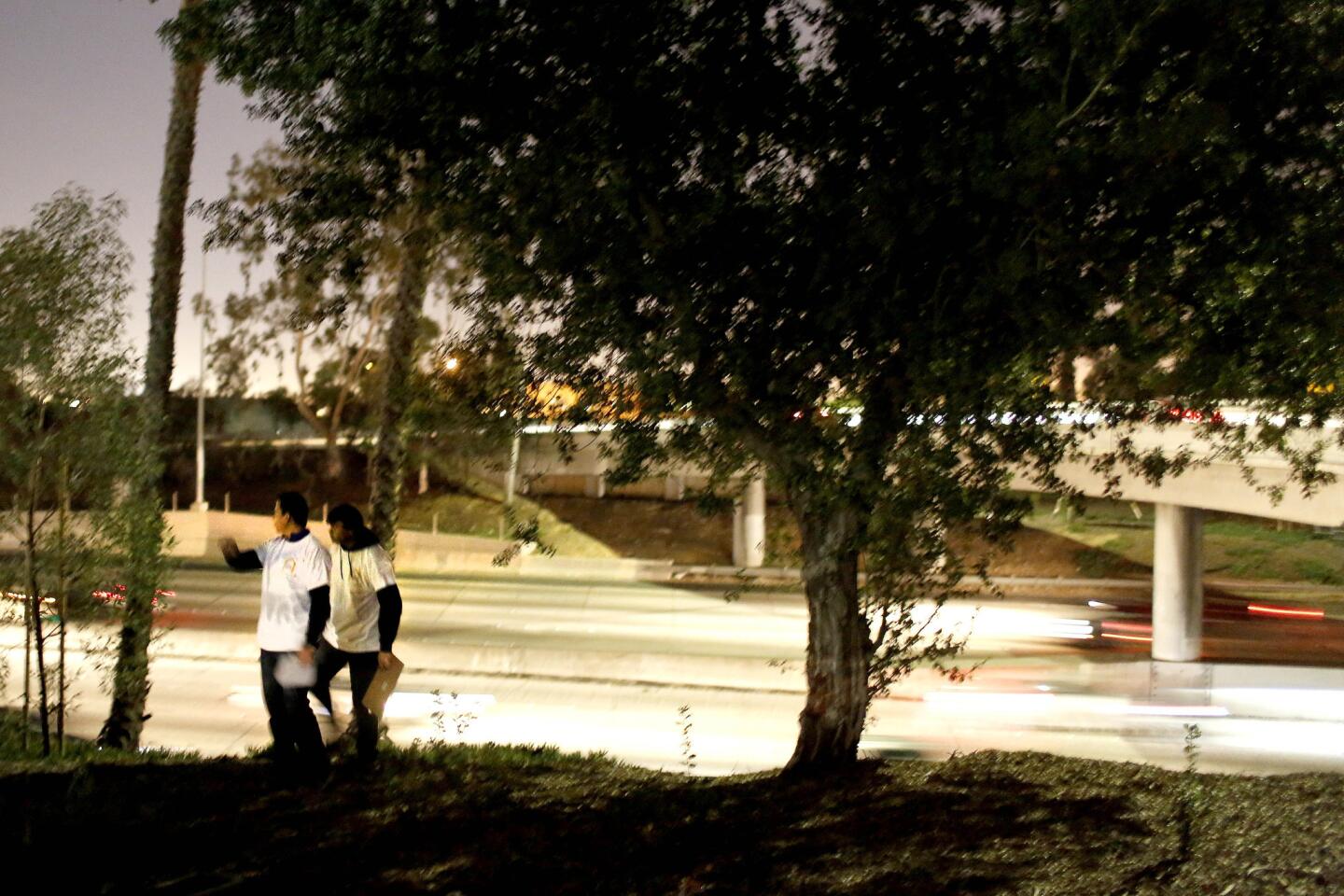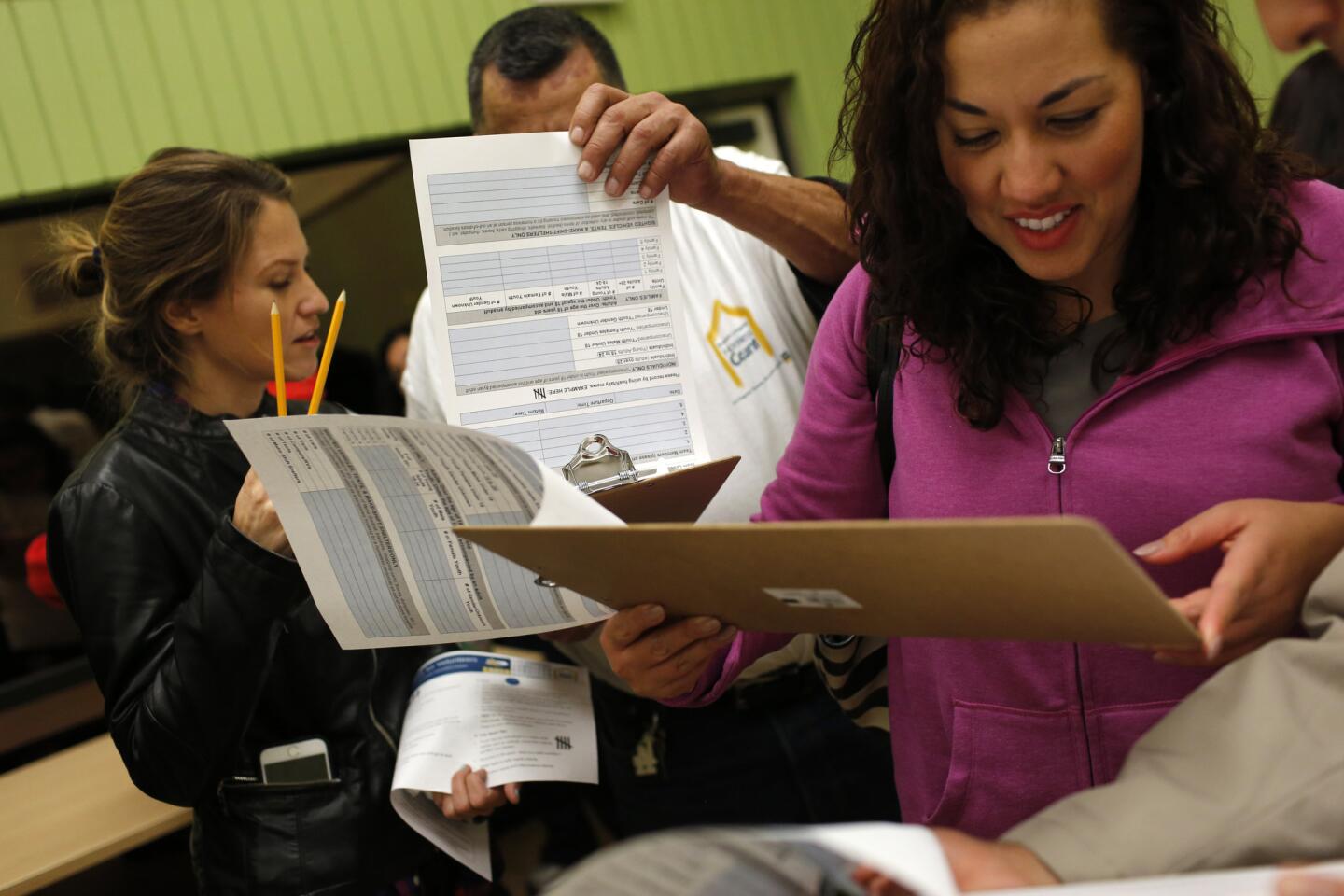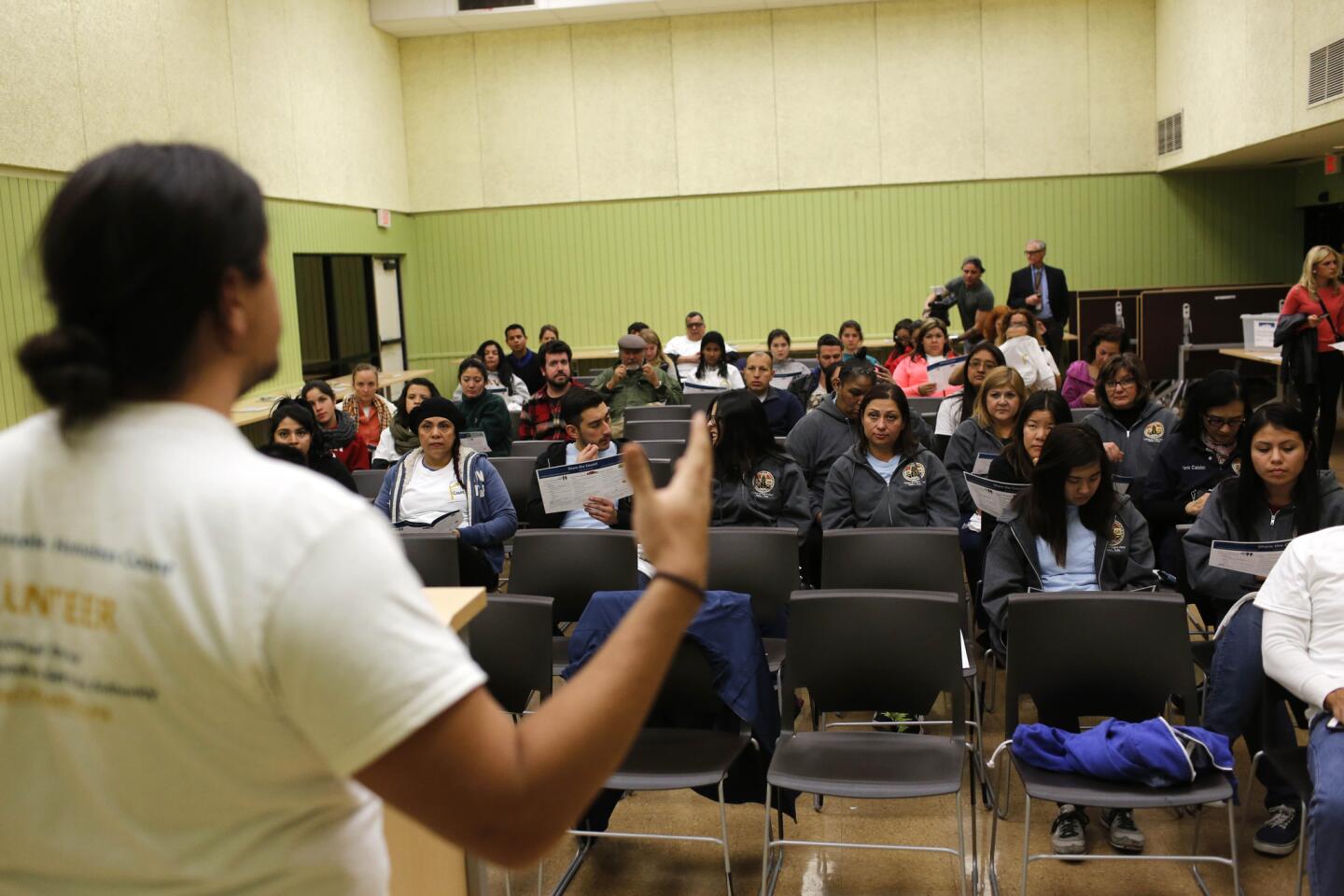Combing the streets with L.A.’s homeless counters
- Share via
The walk began shortly after 9 p.m. at the busy Starbucks in East Los Angeles.
Omar Romero, 32, and his 18-year-old brother, Benjamin, crossed 3rd Street and walked the length of a Pomona Freeway onramp peering into the night for any signs of homeless camps.
By the light of passing cars below, Benjamin spotted a disheveled comforter on the embankment. The brothers crept cautiously closer. There was nothing but the blanket.
“It looks like it’s been there for a while,” Omar concluded. They didn’t count it.
For the brothers, who live nearby in City Terrace, a three-hour trek to count the homeless was an act of compassion and duty.

Counting the homeless in East Los Angeles on Tuesday night.
“I just thought it was something beneficial, to be able to provide them with the services they need,” Omar said.
He was drawn to the 2016 homeless census by a blast email to his work. He’s an eligibility specialist for the L.A. County Department of Social Services.
He recruited his younger brother, a student at East Los Angeles College, to join him.
The brothers were among 41 volunteers who showed up at the Centro Maravilla Service Center on Tuesday night.
It was one of about 150 locations from which thousands of volunteers would fan out over three days and nights to document the presence, or absence, of homeless people in almost all of the county’s 1,887 census tracts.
See the most-read stories this hour >>
The Los Angeles Homeless Services Authority conducts the count to focus its efforts and to satisfy a requirement to receive federal homelessness funds.
The three-night count got started in the San Gabriel Valley and the Eastside on Tuesday. It was scheduled to continue Wednesday in the San Fernando Valley, West Los Angeles and South Bay and will conclude Thursday in the Antelope Valley and central and South L.A.
In a brief training session, LAHSA organizers covered the basics of how to recognize homelessness — “appearance, behavior and condition,” and emphasized one goal above all others: “accuracy.”
“It’s OK if you don’t find anyone,” said organizer Jonathan Hans. “It’s as important to know where they aren’t as where they are.”
Volunteers were instructed to mark their observations on tally sheets. There was one section for individuals, another for families and a third for vehicles, shelters and camps.
If they clearly saw a single person in a tent, they should count one individual, Hans said. Otherwise they should record one tent. If they saw a row of makeshift shelters of cardboard or tarps, they should try to identify individual bedding and mark each one as a shelter.
A ground rule was that the volunteers would observe, not engage, with two exceptions: They were given cards listing service resources to hand to anyone obviously needing help, and they were to report any unattended children to 911.
County employees made up a large portion of the volunteers, several from social services agencies and others working for county Supervisor Hilda Solis.
Six young women participated as an assignment for their classes in urban environmental policy at Occidental College in Eagle Rock.
The turnout in unincorporated East Los Angeles was disappointing, since more than 100 people signed up to help count but only 41 showed up. Instead of one or two tracts to survey, each team of volunteers would have at least three.
The added burden didn’t seem to matter. The teams began drifting back to the center by 10 p.m.
Each returning team reviewed its findings with staff from LAHSA, who sometimes tweaked their counts to maintain consistency.
One thing the volunteers all had learned was that counting homeless people is a task fraught with uncertainty.
Join the conversation on Facebook >>
Aabha Sachar, one of the Occidental students, explained that at one spot they had seen several old cars with blacked-out windows.
“In the end I decided not to count them,” she said.
As predicted, some came back with empty tally sheets. Alan Bergman, a retiree from Echo Park, wasn’t disappointed.
“It’s reassuring to see that there are neighborhoods that are not affected,” he said.
Bergman said he signed up for all three nights of the count out of a sense of purpose.
“Every time I see homeless people I say someone should do something,” he said. “This is an opportunity to do something.”
Just after midnight, the Romero brothers returned, the last team to come in from the field.
In their first tract they found only people living in vehicles. Every one required a deliberation: the black Blazer in a vacant lot with the stroller on top and household goods inside counted; the three cars in the dark lot at the end of a cul-de-sac didn’t.
“They just look like abandoned cars,” Omar Romero was saying when a man talking on a cellphone stepped out from between them and watched the brothers walk away.
Was he homeless? Romero thought not.
“He looked well dressed,” he said.
Three of the Occidental students lingered in the center almost to the end. They had made friends with Anthony Chan, a gregarious business administration student at University of the West in Rosemead.
They had come by Uber. Chan was driving his new friends back to campus.
Twitter: @LATdoug
ALSO:
Surf could reach 20 feet as another round of powerful waves hits Southern California
No charges for LAPD officers who shot newspaper delivery women during Dorner manhunt
Ex-Burbank High coach pleads no contest to having sex with student
More to Read
Sign up for Essential California
The most important California stories and recommendations in your inbox every morning.
You may occasionally receive promotional content from the Los Angeles Times.
